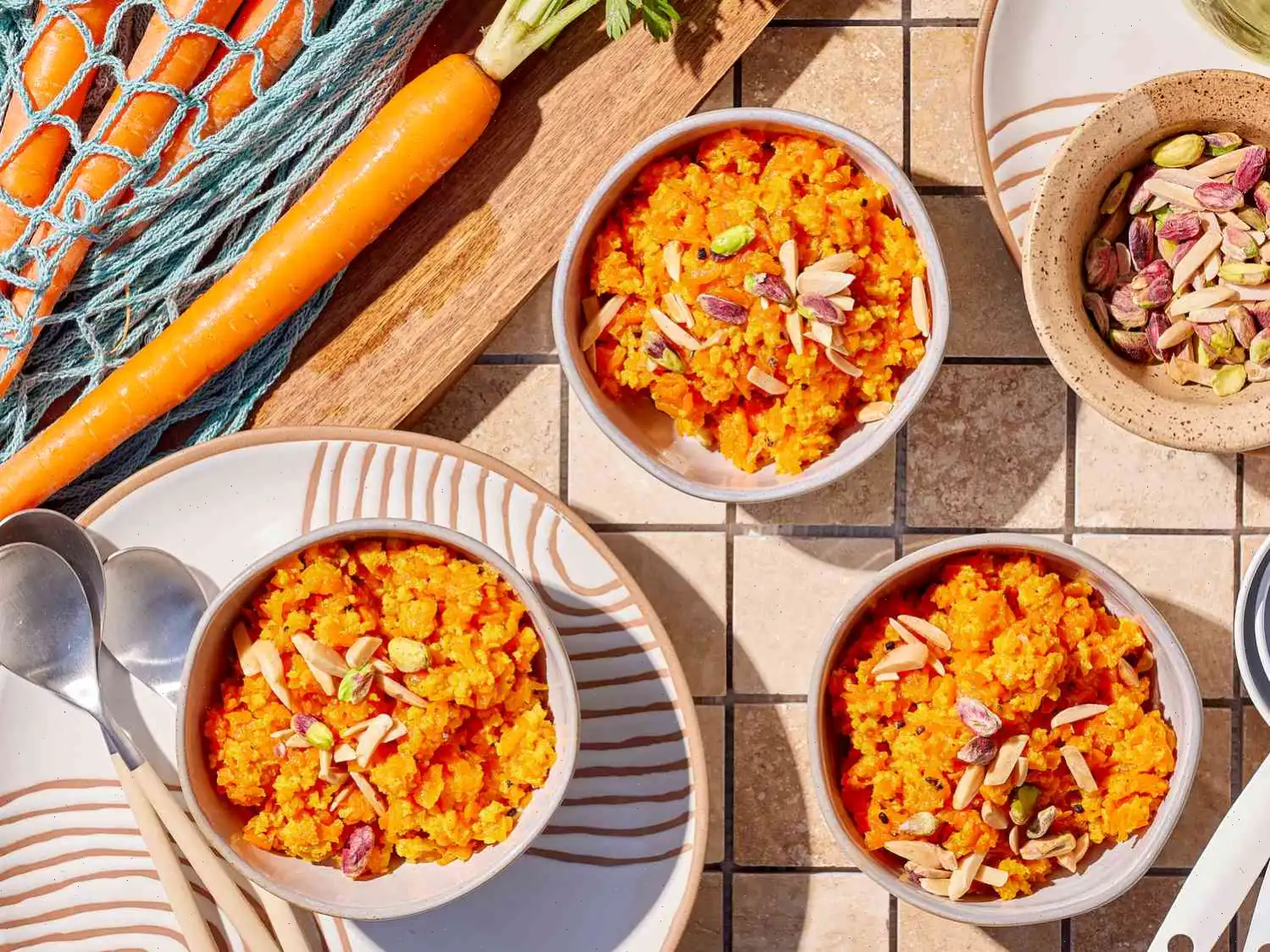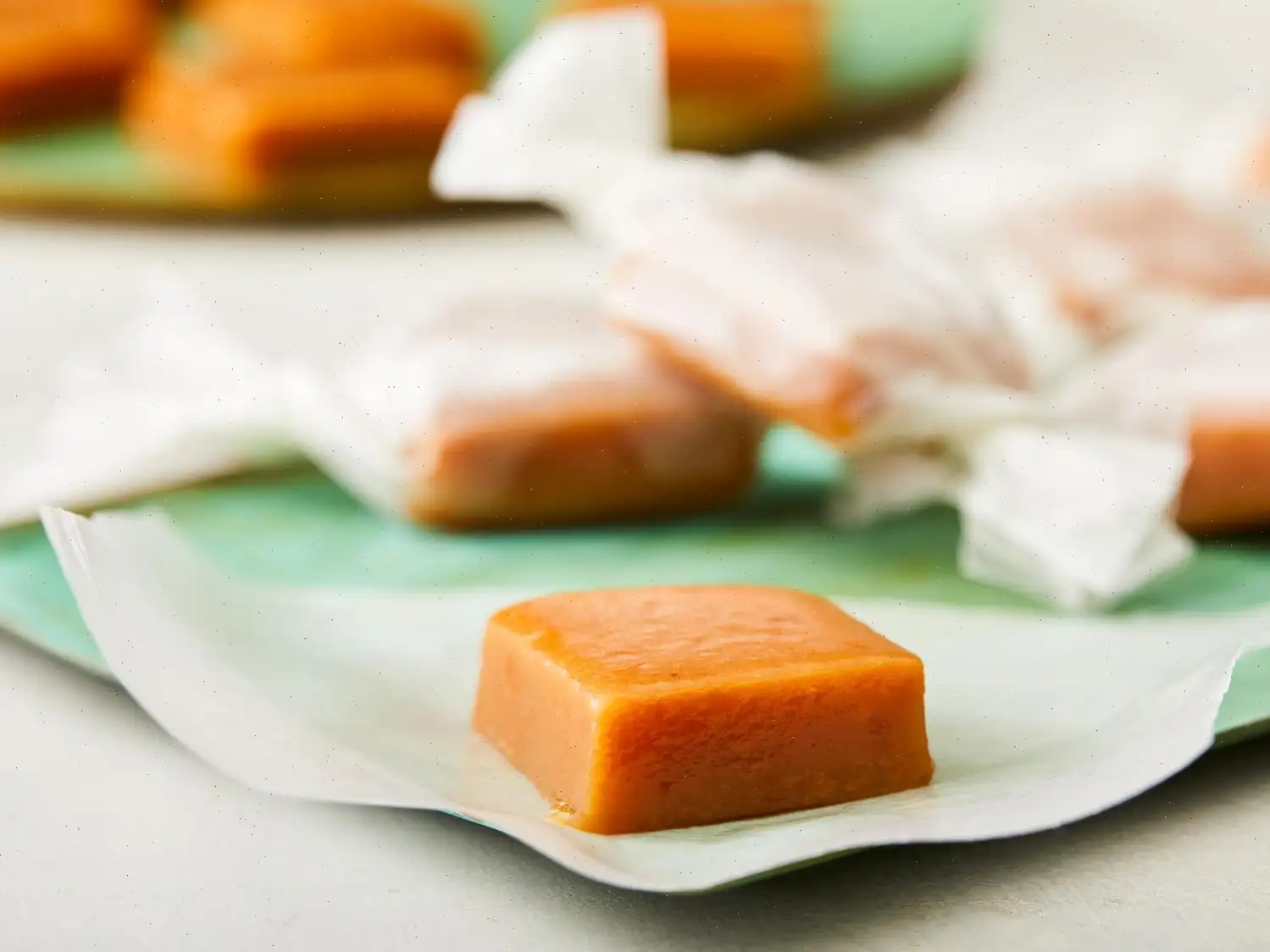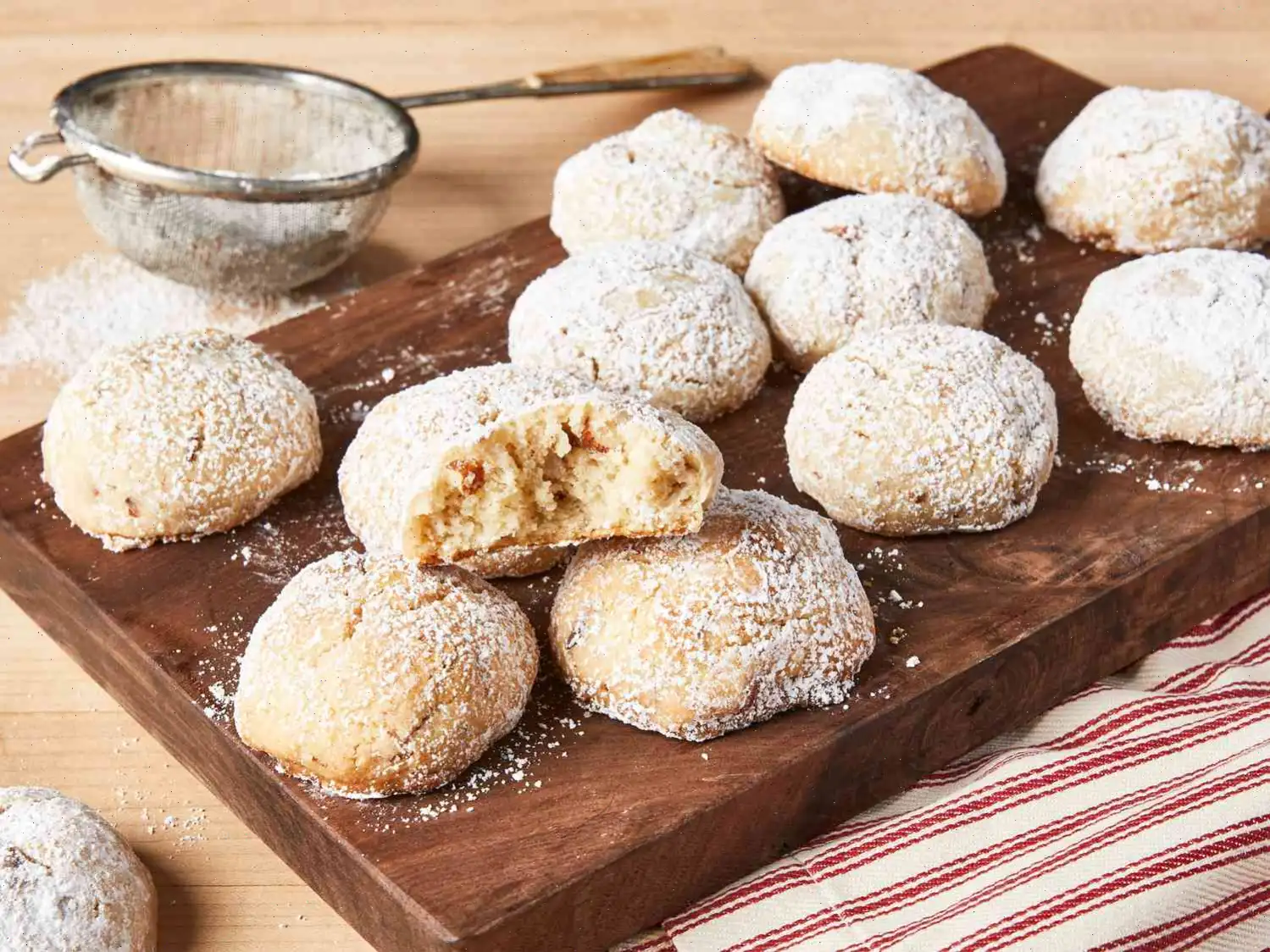
Carrot Halwa
Carrot Halwa (Gajar ka Halwa)
Servings: 12
Prep Time: 15 minutes
Cook Time: 1 hour 15 minutes
Ingredients:
- 8 cups shredded carrots
- 8 cups whole milk
- 1 cup sugar
- 24 green cardamom pods (or 1 teaspoon ground cardamom)
- 6 tablespoons vegetable oil
- 1/4 cup slivered almonds, toasted
- 1/4 cup dry-roasted pistachio nuts
Directions:
- Step 1: In a 6- to 8-quart Dutch oven, combine shredded carrots, whole milk, and sugar. Bring the mixture to a boil over high heat, stirring occasionally.
- Step 2: Once it reaches a boil, reduce the heat to medium. Continue to cook the mixture, stirring occasionally, until most of the liquid evaporates and the mixture thickens (about 1 hour).
- Step 3: While the carrot mixture is cooking, use a mortar and pestle (or a rolling pin) to break open the cardamom pods. Coarsely crush the seeds, discarding the pods. If using ground cardamom, skip this step.
- Step 4: In a large skillet, heat the vegetable oil over medium-high heat. Add half of the cardamom and cook until fragrant, about 30 seconds.
- Step 5: Add the cooked carrot mixture to the skillet and stir constantly. Continue to cook for about 15 minutes, or until the mixture becomes thick and jammy.
- Step 6: Remove from heat. Stir in the remaining cardamom for a fresh burst of flavor.
- Step 7: Before serving, sprinkle the halwa with toasted almonds and pistachios.
- Step 8: Serve warm or chilled. Store in an airtight in the fridge for up to 5 days, or freeze for up to 3 months.
Nutrition Facts (per serving):
- Calories: 288
- Total Fat: 15g (19% Daily Value)
- Saturated Fat: 4g (19% Daily Value)
- Cholesterol: 16mg (5% Daily Value)
- Sodium: 142mg (6% Daily Value)
- Total Carbohydrate: 34g (13% Daily Value)
- Dietary Fiber: 4g (13% Daily Value)
- Total Sugars: 29g
- Protein: 7g (14% Daily Value)
- Vitamin C: 4mg (4% Daily Value)
- Calcium: 225mg (17% Daily Value)
- Iron: 1mg (4% Daily Value)
- Potassium: 504mg (11% Daily Value)
* Percent Daily Values are based on a 2,000 calorie diet. Your daily values may be higher or lower depending on your calorie needs.
** Nutrient information is not available for all ingredients. Amount is based on available nutrient data.
The History of Carrot Halwa
Carrot Halwa, known as Gajar ka Halwa in India, has a rich history dating back centuries. It is believed to have originated in the northern regions of India, particularly Punjab and Uttar Pradesh, where winter carrots are abundant. Traditionally, this dessert was prepared using fresh, locally harvested carrots, simmered slowly in milk and sugar, and flavored with aromatic spices like cardamom. Over time, it became a staple festive dessert, enjoyed during weddings, Diwali, and other celebrations. The method of slowly cooking carrots in milk reflects ancient culinary practices that emphasized patience and depth of flavor.
Regional Variations
While Carrot Halwa is popular across India, regional differences are notable. In Punjab, it is often richer, cooked with ghee and garnished with almonds and pistachios, giving it a luxurious texture. In Gujarat, some recipes incorporate khoya (reduced milk solids) to make the halwa creamier. South Indian variations may include coconut milk for added sweetness and flavor. Each region brings a subtle twist, whether in texture, richness, or the choice of nuts, making Carrot Halwa a versatile dessert that adapts to local tastes and ingredients.
Comparison with Similar Desserts
Carrot Halwa is distinct from other Indian sweets like Suji Halwa (semolina pudding) or Moong Dal Halwa (lentil-based halwa) primarily due to its main ingredient and cooking method. Unlike semolina or lentil halwas, Carrot Halwa relies on the natural sweetness and moisture of carrots, which are slowly reduced with milk and sugar. Its texture is denser and more fibrous compared to the smooth, grainy consistency of semolina or lentil desserts. The unique use of cardamom and roasted nuts also sets it apart, giving it an unmistakable aroma and flavor profile.
Typical Serving Occasions
Carrot Halwa is commonly served at festive events, religious celebrations, and family gatherings. It is often presented in small bowls or decorative dishes, sometimes garnished with slivered almonds and pistachios for visual appeal. In Indian households, it is a winter favorite due to the seasonality of carrots and is frequently paired with puris or simply enjoyed on its own as a warm, comforting dessert. Restaurants specializing in traditional Indian cuisine also serve it as a concluding dish in elaborate meals.
Interesting Facts
- Carrot Halwa is sometimes called the Indian carrot pudding because of its sweet, rich texture.
- Cooking the carrots slowly in milk enhances their natural sweetness, reducing the need for excessive sugar.
- In modern variations, condensed milk or khoya is used to speed up the cooking process while retaining richness.
- The dessert gained popularity outside India through diaspora communities, making appearances in British, American, and Middle Eastern Indian restaurants.
- Carrot Halwa is celebrated not only for its flavor but also for its nutritional value, providing vitamins A and C from the carrots.
FAQ about Carrot Halwa
Comments
Kathleen Lee
09/27/2024 02:56:31 PM
Such a delightfully simple recipe! I adjusted the quantities to suit my smaller household - I used 5 cups each of milk and carrots and ¾ cup of sugar, while keeping the same amount of cardamom. To save time and space, I skipped the step of blooming the cardamom in oil in a separate pan and instead did it first before adding the carrots, sugar, and milk. The result was absolutely wonderful! Despite my initial concerns about it being too sweet without any salt, I made up for it by using salted pistachios, which worked perfectly. I recommend toasting the slivered almonds beforehand for a more intense flavor. I will definitely be making this again.
Joshua Gonzalez
11/29/2023 06:13:32 AM
I adore carrot halwa, and this recipe is fantastic as it calls for regular milk.








